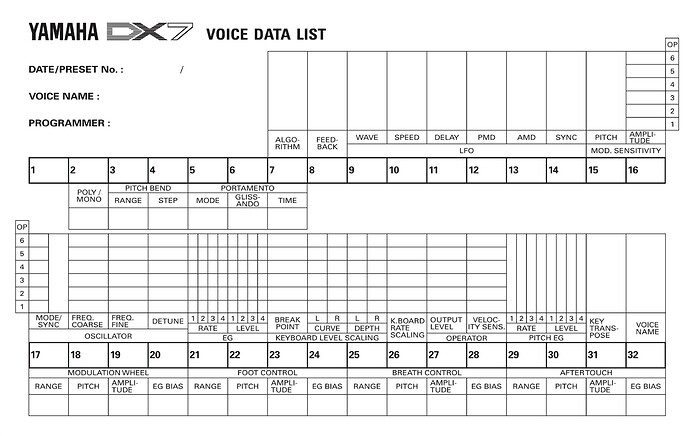I anyone wants the EPiano1 sound, here it is; (heavily indebted to @mosphaere for this)
DX7 EPiano 1.vcvs (33.2 KB)
and if anyone needs a patchbook for the DX7, here it is recreated;
Voice Data List.pdf (171.5 KB)
and if anyone wants to share one of these filled in with the values for a decent sound, post it here.
